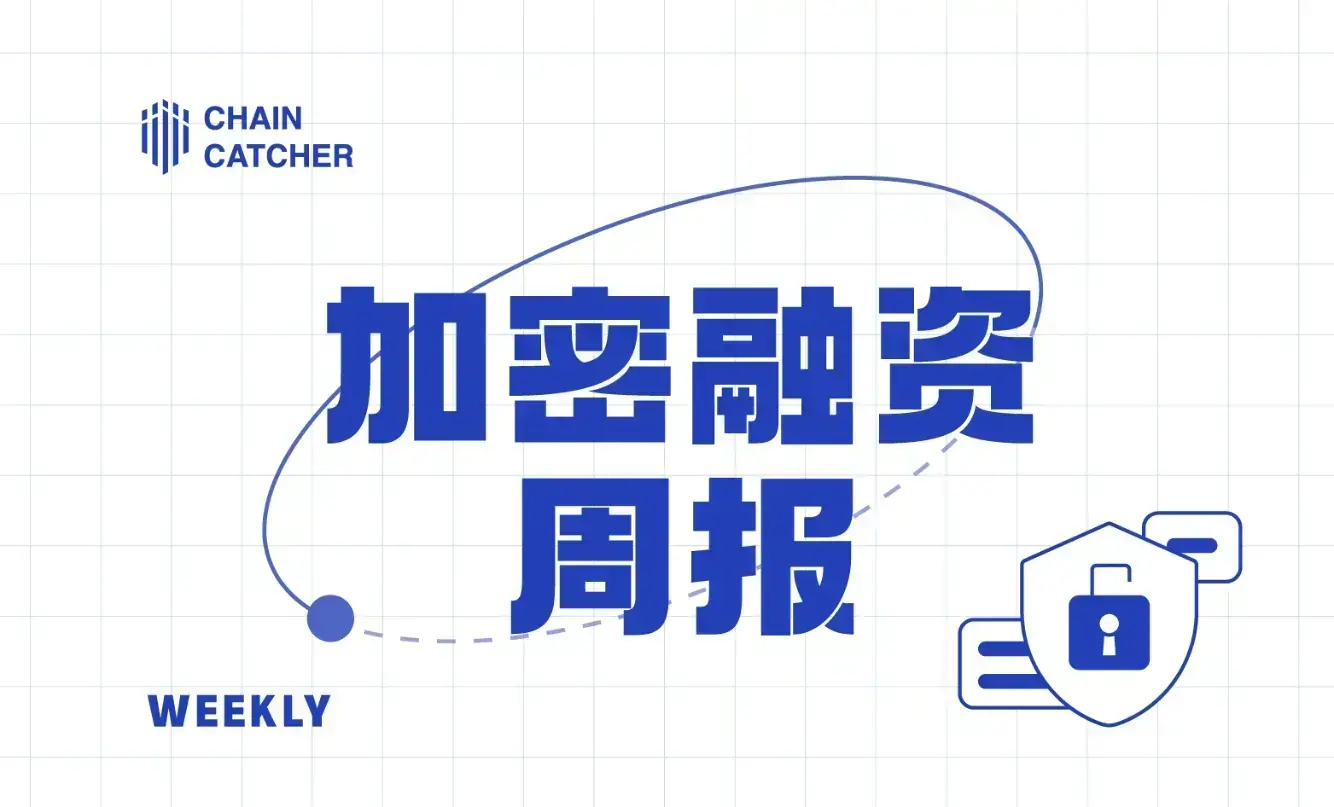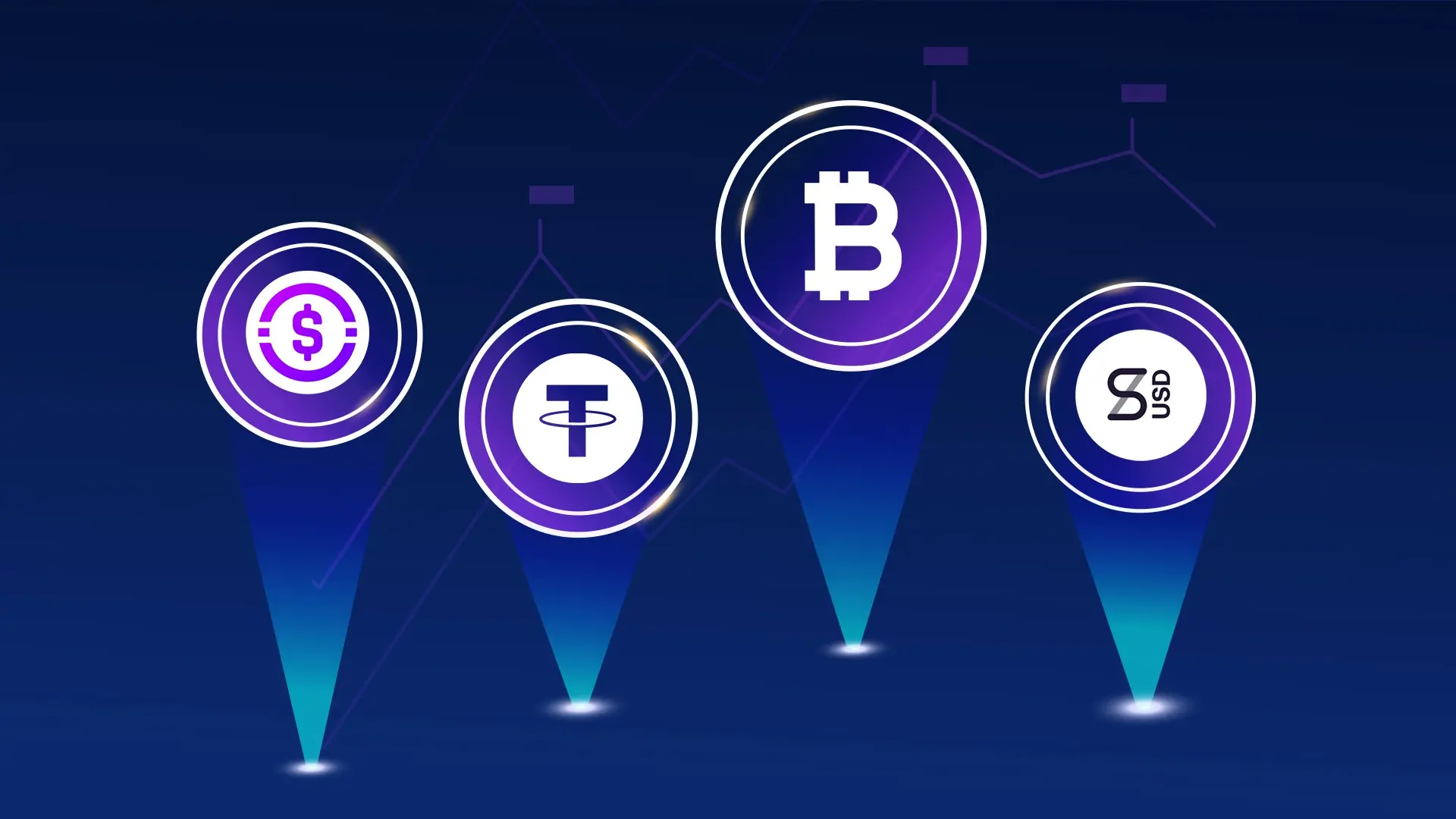2025 Crypto Outlook - Hear What Major Investment Institutions Have to Say (Part 2)
Authors: IOSG Ventures, Bing Ventures, Waterdrip Capital, HashKey Capital
Compiled by: Scof, ChainCatcher
As the new year begins, the global investment environment continues to change, with various emerging technologies and market trends constantly emerging. In this context, how investors formulate long-term strategies and evaluate and select investment projects has become a widely discussed topic both within and outside the Crypto industry.
In response, RootData, in collaboration with ChainCatcher, hosted this interview. In the previous issue, we invited investment institutions including OKX Ventures and Bixin Ventures to provide constructive feedback. This issue features several representative investment institutions, including IOSG Ventures, Bing Ventures, and Waterdrip Capital, who engage in in-depth discussions on investment trends and recommendations for 2025.
What are the investment strategies and promising sectors for 2025? What is the logic behind them?
[IOSG Ventures](https://www.rootdata.com/zh/Investors/detail/IOSG Ventures?k=MTcy):
- Crypto x AI
Crypto x AI is one of the most innovative and dynamic fields in the industry recently. It has attracted significant market attention and offers a vast space for imagination. Sovereign AI (AI systems driven by decentralized crypto infrastructure) represents a revolutionary opportunity (but granting such power to AI also carries many risks). These systems can achieve true autonomy, interacting on-chain with non-custodial wallets and other agents and humans. In the future, we may even see AI agents purchasing human services for off-chain tasks.
- DePIN
DePIN is a highly innovative and diverse field. It combines crypto economic models with off-chain hardware to address many challenges in traditional industries. While DePIN is a very promising area, not all DePIN projects are equally promising; the success of specific projects highly depends on their own merits.
We are particularly excited about DePIN projects that can provide clear and measurable value (such as reducing costs, improving efficiency, or entering untapped markets). The success of DePIN often stems from the new business models it enables, which centralized systems cannot replicate. This advantage allows projects to achieve better market penetration, distribution, and accessibility. DePIN can also drive cost efficiency and better unit economics by reducing operational costs or improving resource utilization, making its decentralized model more competitive and sustainable. Additionally, capital expenditure optimization is a significant advantage of DePIN projects, as they distribute infrastructure costs to the community through token incentives, enabling faster scaling and broader participation.
On the other hand, we should avoid DePIN projects that misuse tokenization. Their failed token economics often lead to unsustainable ecosystems. Some projects' tokens do not bring actual efficiency improvements or enhancements over traditional methods but rely solely on token incentives to mask potential inefficiencies and subsidize usage costs in the short term. Relying solely on tokenization does not justify the rationale for decentralization, and sometimes the outcomes are worse than existing centralized models.
- Payments
Stablecoins have become the mainstream payment medium in the crypto industry. Due to their programmability, cross-border usability, and increasingly clear regulatory frameworks, stablecoins are expected to become the standard settlement currency for global payments.
While stablecoins have clear advantages over fiat currencies in terms of programmability and cross-border liquidity, broader adoption is still constrained by regulatory challenges and inefficient on-chain and off-chain mechanisms. However, a pro-crypto U.S. government may provide regulatory clarity, creating a healthier environment for efficient, liquid, and low-cost crypto and fiat transactions.
- Consumer Applications
The consumer applications sector is highly exploratory but also harder to define, often overlapping with other areas such as AI, DePIN, and payments. This field encompasses a wide range of applications, including but not limited to AI-driven consumer solutions, consumer-facing DePIN projects, and payment solutions designed for consumers.
In addition to practical application scenarios, consumer applications in the crypto space also involve speculation and gamification. A particularly important category here is blockchain gaming. These games incorporate speculative economic elements and memes and remain one of the most successful consumer interaction experiments in the industry. These speculative applications often blur the lines between entertainment, finance, and practicality, creating unique opportunities for innovation.
Looking ahead, new experiments that combine crypto with consumer applications will bring more opportunities. Game mechanics integrated with economic incentives show great potential, providing new ways to attract users and drive adoption. The design space in this area is vast, and we expect it to yield groundbreaking innovations by 2025.
[Bing Ventures](https://www.rootdata.com/zh/Investors/detail/Bing Ventures?k=MTE4Mzg=), General Partner, Bruce Lan:
Investment Strategy:
In 2025, our investment strategy focuses on discovering the value of early-stage projects and promoting the mainstream application of blockchain technology. The logic behind this is simple: the rapid iteration of the blockchain industry means that the earlier one participates and lays out, the more likely one is to capture exponential growth opportunities.
Specifically, we are more focused on the following directions:
- Early Project Priority:
In the coming years, the core competitiveness in the blockchain field lies in technological innovation and practical implementation capabilities, which are often found in early-stage projects. For us, supporting promising startups is not just an investment but an important way to drive the entire industry forward.
- Integration of Web3 and Web2:
The mainstreaming of blockchain technology hinges on its ability to truly "break the circle" and integrate into daily life and traditional markets. We are optimistic about projects that can find the intersection of Web3 technology and Web2 user needs, such as applications that optimize user experience and lower usage barriers.
- New Projects from Renowned Teams:
Many experienced teams in the industry often have deep resources and market insights when they choose to start their own ventures. These projects typically have a high starting point and therefore a higher success rate.
Key Sectors:
In 2025, we are particularly optimistic about the following areas, which demonstrate the comprehensive evolution of blockchain technology from underlying architecture to practical application:
- ParallelVM (Parallel Virtual Machine Architecture):
We believe that Parallel Virtual Machine architecture is key to improving blockchain performance. The transaction processing speed of traditional blockchain systems is often a bottleneck, while ParallelVM provides a solution to enhance throughput through parallel execution of transactions and contracts. Especially in scenarios with high transaction density demands, such as DeFi and blockchain gaming, the application potential of ParallelVM is enormous. Of course, the challenges in this sector include concurrency management and security issues that still need time to resolve.
- Alternative VM Architecture:
Blockchain developers have a clear demand for more efficient and flexible virtual machines. Alternative VM breaks the limitations of the Ethereum Virtual Machine (EVM) and supports more programming languages, such as Rust and Wasm, which is crucial for attracting developers and creating more complex applications. Although building the ecosystem for new architectures takes time, its potential cannot be ignored.
- Crypto Compliance:
As global regulations on cryptocurrencies become increasingly stringent, compliance is becoming a necessity. Whether it’s KYC, AML, or tax compliance, projects that can simplify these processes and ensure compliance transparency will be very popular, especially in the context of mainstream financial markets seeking to embrace crypto.
- DeFi Infrastructure and Innovation:
We have always believed that improving infrastructure is key to expanding the user base of DeFi. Reliable cross-chain bridges, decentralized insurance, and more secure oracle systems can enhance user trust in DeFi.
- AI and Crypto Integration (AI x Crypto):
The combination of AI and blockchain is an emerging direction. We see that AI can be used to optimize blockchain network performance, while blockchain can provide data privacy protection for AI. This technological intersection may lead to unexpected innovations, such as smarter smart contracts or decentralized AI services.
- Bitcoin Innovation (BTC Innovation):
Bitcoin remains the backbone of the crypto industry, but its potential has not been fully realized. We are focusing on the development of Bitcoin Layer 2 scaling and smart contract functionalities, which can enable Bitcoin to excel in payments and DeFi. However, the Bitcoin community's acceptance of change is relatively low, and the pace of innovation may be slower.
The selection of these sectors is not coincidental; they reflect the dual drivers of technology and market demand, which are at the core of our investment strategy.
[Waterdrip Capital](https://www.rootdata.com/zh/Investors/detail/Waterdrip Capital?k=MTEz):
2025 is a year for Crypto to embrace large-scale adoption and regulation. For the primary market, our investment logic will be based on the following core trends:
Compliance and Mainstreaming: The gradual clarity of the global regulatory environment and the introduction of cryptocurrency ETFs signify that cryptocurrencies are moving from the fringes to the mainstream financial system.
Technological Innovation and Integration: The combination of AI and blockchain will give rise to new application scenarios and business models, further expanding market size.
Cost Efficiency and Market Demand: The stablecoin and RWA sectors can significantly reduce transaction costs and improve asset liquidity, meeting the actual needs of businesses and investors.
Therefore, we will focus on sectors such as RWA, AI + Crypto Infra, and paradigm innovations around stablecoins, including PayFi and DeFi.
Integration of Traditional Finance and Blockchain (RWA Sector)
The global regulatory environment is gradually clarifying, accelerating the compliance process of the crypto industry. In the future, blockchain technology will gradually integrate deeply with traditional financial systems. The tokenization of government bonds, real estate, and other financial assets will enhance the liquidity and transparency of these traditional assets while providing new collateral for the DeFi ecosystem. Recently, countries like the UK and the US have begun exploring the issuance of digital bonds, which undoubtedly serves as the best example of positive signals regarding RWA policies.
Moreover, the continuous rise in BTC prices has not only driven the impressive performance of asset-driven crypto concept stocks represented by MicroStrategy in the secondary market but has also triggered a "copycat effect"—more and more listed companies are beginning to emulate this model by incorporating Bitcoin or other crypto assets into their balance sheets to enhance their valuations and market appeal.
AI and Crypto
AI + Crypto will be the next multi-billion market opportunity. We are particularly focused on the application of AI agents in blockchain payment infrastructure and AI-driven decentralized financial tools. Stablecoins may become the preferred payment tool for AI agents, and high-throughput blockchains (such as Solana, Lightning Network, BASE) will significantly benefit from the proliferation of AI. Additionally, utilizing DID technology for AI identity verification and fraud protection solutions is also one of the future directions.
Stablecoins and Payment Innovations
Stablecoins have proven their value as global payment tools over the past year, especially in reducing transaction costs and improving efficiency. We expect that 2025 will see large-scale adoption of stablecoins in corporate payments, particularly among small and medium-sized enterprises (such as restaurants and retail), which will be the first to shift from credit card payments to stablecoin payments. Furthermore, as more businesses recognize the cost advantages of stablecoins, there will be new growth opportunities for stablecoin issuance and payment integration services.
In terms of investment strategy, we prefer to focus on projects that are in the early stages and have the potential for large-scale adoption in the future. We are very optimistic about the AI + Crypto direction, which includes both infrastructure projects like TEE (Trusted Execution Environment) and Data Labeling, as well as AI agent application projects specific to certain vertical business scenarios. Waterdrip Capital has already begun systematic layout in this field from 2023-2024, such as SWAN Chain as an AI computing chain, BAS for verification services based on Green Field, and Alsa for AI + payment integration; we can say that we have covered the entire industrial chain from AI training, computing, storage to application.
However, we will still keep an eye on other sectors, looking forward to seeing more groundbreaking technologies and business models emerge in 2025.
For the secondary market, we prefer to buy targets that have real landing scenarios and self-sustaining capabilities; including public chains, service providers, and protocol projects, which is very similar to how companies with good cash flow performance in the traditional stock market regularly repurchase their own stocks; secondly, we can pay attention to crypto concepts in the stock market; last year we published a research report on crypto concept stocks, as mentioned above, in addition to asset-driven MSTR, we also analyzed mining concepts like MARA and infrastructure concepts, as well as exchange and payment concepts. Therefore, in the secondary market, we will focus on allocating stocks related to these concepts.
[HashKey Capital](https://www.rootdata.com/zh/Investors/detail/HashKey Capital?k=MTg0), Partner, Xiao Xiao:
2025 Investment Outlook:
We will focus on application areas, especially various breakout sectors and community-driven scenarios. Starting in the second half of 2025, we will gradually summarize the pain points in applications and explore a new round of infrastructure/tool layers.
We will continue to adopt a primary and secondary market linkage strategy, focusing on discovering early-stage projects with reasonable or undervalued valuations in the primary market, while in the secondary market, based on information channels from the primary market, we will adopt more flexible methods to expand the range of investment targets, using lending, derivatives, and other methods to control risks.
Key Sectors:
- Crypto AI: autonomous agents and multi-agent systems, intent-based trading agents, smart money agents, integration of agents and tools, data services, agents platforms (launchpad, marketplace, etc.), and more.
- Consumer dapps related: applications with breakout potential, such as payments/stablecoins, RWA, trading, gaming, advertising, DePIN, etc.
- New Concepts: small investments in concepts that easily attract attention based on user interest logic.
- Ecosystem: continuously monitor the Solana, Ethereum, and Bitcoin ecosystems, exploring new opportunities in new ecosystems like Base, Sui, Berachain, Monad, Movement, etc.
What suggestions can you share for projects planning to raise funds in 2025?
[IOSG Ventures](https://www.rootdata.com/zh/Investors/detail/IOSG Ventures?k=MTcy):
- Distill the essence and first consider what your team's structure and capabilities are suited for, find the right positioning and PMF, and clearly present this to investors while retaining a flexible mindset for adjusting direction.
- Have a clear profit model and token economics, and think carefully about why a token is needed and what it will be used for. Investors will focus on how the project generates revenue, how the token appreciates, and how to design a reasonable incentive mechanism.
- The Crypto fundraising environment in 2025 will place more emphasis on substantive value creation rather than conceptual speculation, requiring differentiated competitive strategies and community-driven GTM logic.
[Bing Ventures](https://www.rootdata.com/zh/Investors/detail/Bing Ventures?k=MTE4Mzg=), General Partner, Bruce Lan:
2025 will present a more complex but opportunity-filled fundraising environment for entrepreneurial teams. Here are our suggestions:
Suggestion 1: Deep Community Involvement
Currently, community users have become a crucial driving force behind project success. Teams need to design fair and transparent token distribution mechanisms that not only incentivize investors but also attract core users. Users are no longer just investors in the project; they are part of the ecosystem and directly influence the project's future development.
Suggestion 2: Keep Up with Dex Trends
The mainstreaming trend of decentralized exchanges cannot be ignored. Dex provides better liquidity and transparency, and many popular projects will prioritize listing on Dex, creating market heat and compelling centralized exchanges to follow suit. This trend brings greater autonomy to projects while broadening fundraising channels.
Suggestion 3: Clearly Articulate Your Story
In a highly competitive sector, clear storytelling is crucial. Teams need to accurately convey the core value of the project, especially the intersection of technological innovation and market demand. A good story can help teams stand out among investors and community users.
Suggestion 4: Focus on Long-term Community Value
Fundraising is not just about addressing short-term funding needs; it is also an opportunity to build long-term community trust. Through transparent governance and fair mechanism design, teams can attract users to continuously support the project ecosystem, laying the foundation for future development.
Summary:
From an investment perspective, we hold an optimistic view of the overall trends for 2025. Particularly in areas such as the integration of blockchain and AI, the improvement of DeFi infrastructure, and the gradual entry of Web3 technology into mainstream markets, we see numerous opportunities. At the same time, for projects planning to raise funds, we advise teams to focus more on community building, keep up with the trend of decentralized trading, and win market trust through clear project narratives. Future competition will not only be a contest of technology but also a reflection of trust and value.
[Waterdrip Capital](https://www.rootdata.com/zh/Investors/detail/Waterdrip Capital?k=MTEz):
- Adhere to Long-termism and Strengthen Cash Flow Management
The current crypto market may be in a bull market cycle, but project teams need to prepare for a potentially flat market over the next 2-3 years. Good cash flow management and self-sustaining capabilities will be key to the survival and development of projects. If the goal is to create projects with real business applications, then consider the efficiency of fund usage during fundraising and develop a long-term financial plan.
- Focus on Integration Opportunities with Traditional Industries
As blockchain technology deeply integrates with other industries, project teams should actively seek cooperation or financing opportunities with traditional industries. Financing from traditional industry VCs can provide more support for projects.
- Establish Communication Channels with Regulatory Agencies and Monitor Crypto Industry Regulations
As the global regulatory environment gradually clarifies, project teams should actively communicate with regulatory agencies to ensure project compliance. Compliance is not only the foundation for the long-term development of projects but also key to attracting traditional capital and institutional investors.
[HashKey Capital](https://www.rootdata.com/zh/Investors/detail/HashKey Capital?k=MTg0), Partner, Xiao Xiao:
Successful projects in 2024 are basically community-driven, and focusing on and addressing the needs of the community and users is the key.










